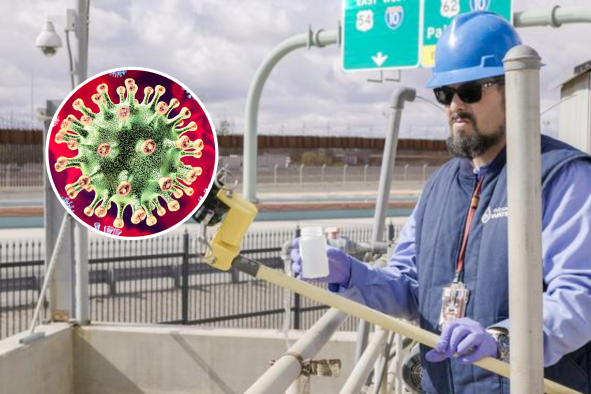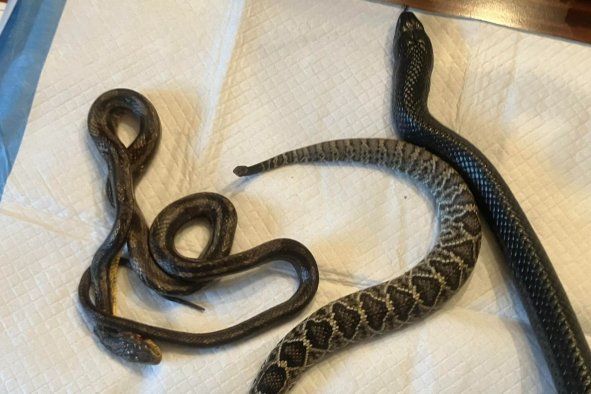Scientists at the University of Delaware have been searching for ways to minimize levels of dangerous toxic metals in rice for infant health.
Heavy metals like arsenic and cadmium are present in rice, a staple in baby food, and levels depend on how it's grown. Exposure to these metals in babies and young children can have serious consequences, potentially delaying brain development.
The U.S. Food and Drug Administration (FDA) is drafting new regulations for heavy metals in baby food as part of its Closer to Zero Action Plan.
"Our work could hopefully help shape policy," soil biogeochemist Professor Angelia Seyfferth, co-author of the study, said in a statement.
She explained that the "challenge" that guided their research was to minimize multiple dangerous heavy metals simultaneously, but they found that "There really isn't one that is universal across all soils."
The University of Delaware scientists experimented with growing rice under various conditions in 18 small fields at a university-owned farm.
The study found that rice grown in flooded fields contained more arsenic and lower levels of cadmium. The rice paddies also emitted more methane, a greenhouse gas. Drier conditions led to less arsenic in the rice but more cadmium.
"The concentrations of cadmium in the grain were not of concern for human health," said Seyfferth.
Rice is often grown in very wet, flooded soils. When this is the case, oxygen that would usually stay in tiny pores in the soil is replaced by water. With little oxygen, the microorganisms in the soil start to breathe with iron oxide minerals.
"Arsenic likes to stick really tightly onto those iron oxides," said Seyfferth, explaining that they dissolve when the microbes use iron oxides to breathe. The arsenic stuck onto them can go into the water and get absorbed by the rice plant.
"By drying out the soil, we're sort of putting the brakes on the microorganisms that breathe with iron oxides and with arsenic," said Seyfferth.
"Once you introduce oxygen, the iron oxides that dissolved are solid again. They're kind of like a Brita filter. They arsenic sticks onto the iron oxides and it's not in the water, so the plant roots can't really get to it."
The UD scientists are now studying arsenic in rice through fieldwork in Arkansas, where they will work directly with farmers to help them manage water flooding in their rice paddies.
Through previous research on levels of cadmium and lead in spinach, they have found that farmers and other food industry professionals are willing to take action to reduce dangerous metals in their produce, but they need incentives, testing and education to make it worthwhile.
"It's really important to get stakeholder feedback to see what's feasible for farmers and that it wouldn't be a big burden to something that they already do, or changing a practice that they're doing, that they have to do to meet some other standard, like a different food safety standard," said Seyfferth.
"Farmers are often working on very thin margins for something like spinach. If the regulatory bodies made it really hard to achieve a certain level of cadmium or lead, they might just switch and grow something else."
She suggested that there may be simple solutions—such as lowering chlorine levels in the water used to irrigate leafy greens, which can encourage higher cadmium levels, or washing spinach with lemon juice extract to remove up to 26 percent of the spinach.
However, the solutions would vary depending on the farm, so the scientists are also calling for further research to run similar experiments in various soils and conditions.
"The solutions are not a blanket solution," said Seyfferth. "They're not for all soils. They would have to be really site-specific."
Do you have a tip on a food story that Newsweek should be covering? Is there a nutrition concern that's worrying you? Let us know via science@newsweek.com. We can ask experts for advice, and your story could be featured in Newsweek.
References
Limmer, M. A., & Seyfferth, A. L. (2024). Controlling exposure to As and Cd from rice via irrigation management. Environmental Geochemistry and Health, 46(9), 339. https://doi.org/10.1007/s10653-024-02116-x
Seyfferth, A. L., Limmer, M. A., Runkle, B. R. K., Chaney, R. L. (2024). Mitigating Toxic Metal Exposure Through Leafy Greens: A Comprehensive Review Contrasting Cadmium and Lead in Spinach, GeoHealth 8(6) https://doi.org/10.1029/2024GH001081
Disclaimer: The copyright of this article belongs to the original author. Reposting this article is solely for the purpose of information dissemination and does not constitute any investment advice. If there is any infringement, please contact us immediately. We will make corrections or deletions as necessary. Thank you.



